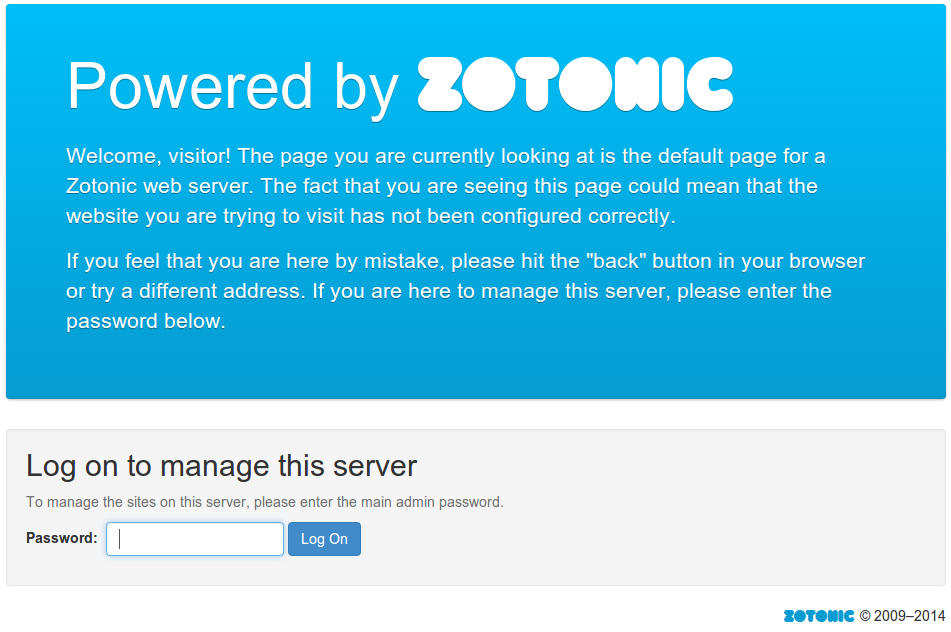The Zotonic “status” site¶
The Zotonic “status” site is the first thing you see once you have installed Zotonic, when you do not have any sites configured yet. This is what it looks like:

This site is also the fallback site for Zotonic.
Since Zotonic supports virtual hosting, it uses the HTTP Host: parameter to see which site should be served at which URL. If it does not find a Host: header, or if the host header does not correspond to any known Zotonic site, it shows the zotonic_status site instead.
Logging in¶
When logged in to the Zotonic status site, you can manage the running sites on the system: starting, stopping and upgrading them.
Upon first visit, the site shows a friendly message, which tells visitors that the site they are looking at has probably not been configured correctly yes. It also asks for a password to log in.
The password for this site is automatically generated and stored in ~/.zotonic/zotonic.config.

The “update” buttons only appear when the site (or Zotonic itself) is under Mercurial or Git revision control. These buttons do a “pull” from the repository and then rebuild the system.
Getting the global sites status¶
The Zotonic status sites exposes a small API service which allows you to check whether all of your sites are still running:
http://yourzotonichost.com/api/zotonic_status/check
It returns a JSON response of {"status":"ok"} when every Zotonic site is running.
"Running" means that a site’s status is not "retrying" or "failed"; so it does not count sites that you have manually stopped from the interface.
This API service can be plugged in to a service like https://www.pingdom.com/ to monitor the availability of all hosted sites at once.
